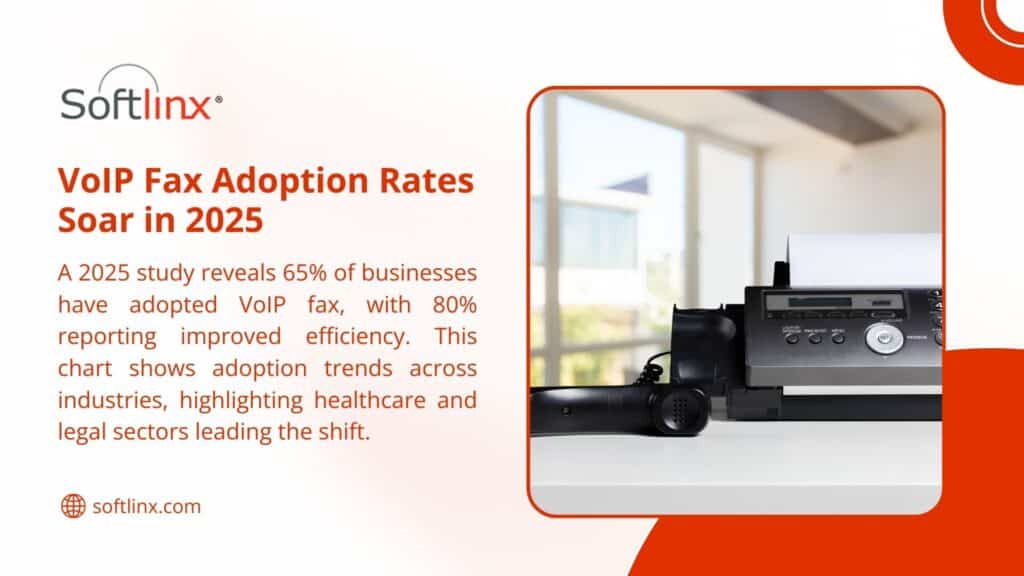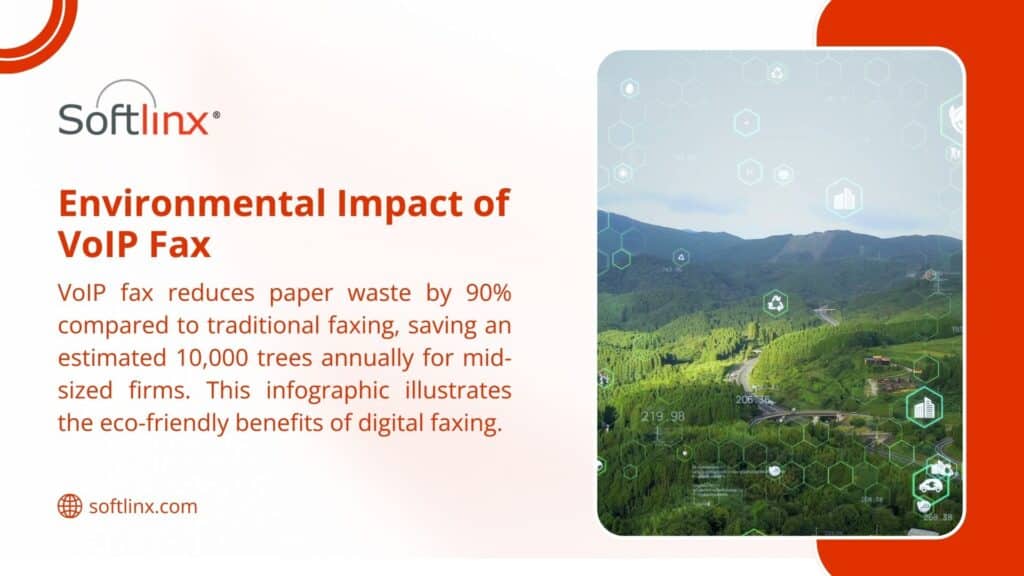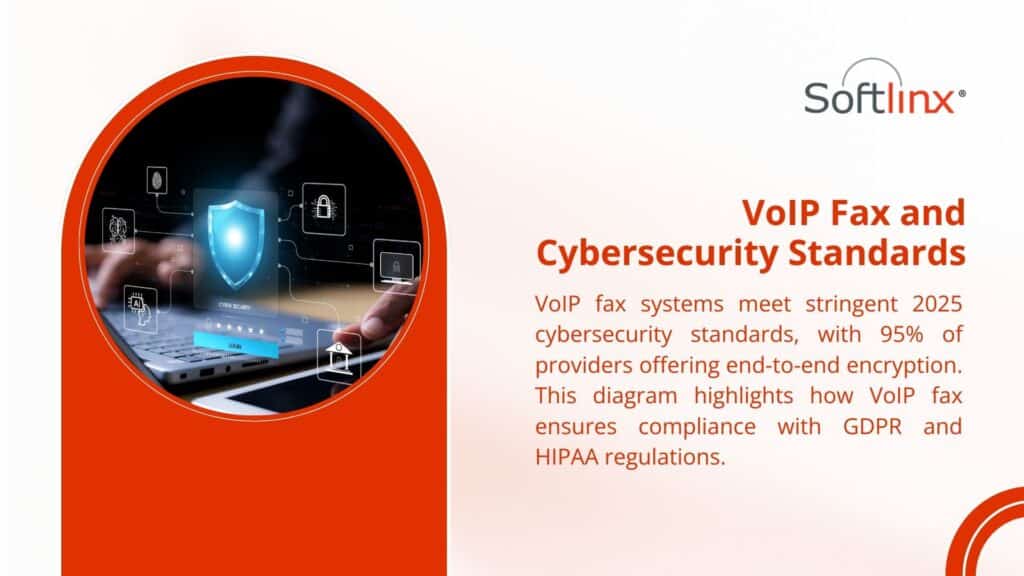Fax machines were supposed to be dead by now. Everyone said email would kill them off, then smartphones, then cloud storage.
Yet here in 2025, fax machines are still clicking and whirring away in offices everywhere. The difference? Most aren’t actually fax machines anymore. They’re voip fax systems that look nothing like those beige monsters from the 90s.
Walk into a modern law office or medical practice, and there’s a good chance the “fax machine” is actually just software running on someone’s computer. That’s because smart businesses figured out how to keep the fax functionality they legally need while ditching the headaches that come with old-school hardware.
The shift happened quietly. One day, companies were dealing with paper jams and busy signals; the next they were sending faxes from their phones during lunch breaks. VoIP fax made that possible, and it’s completely changed how businesses think about document transmission.

What Happens With VoIP Fax
VoIP fax is basically faking being a regular fax machine, but doing it way better. Traditional fax machines turn documents into squeaky analog signals that crawl through phone lines. Anyone who’s ever heard a fax machine dial knows that horrible screeching sound. That’s your important contract turning into audio static.
VoIP fax skips all that nonsense. It takes documents, turns them into clean digital files, then shoots them across the internet like any other data. No more crossed wires, no more “please try again” messages, no more wondering if that crucial page actually made it through.
The receiving end gets a perfect copy every time. Not the faded, slightly crooked mess that analog fax lines often produce, but a crisp digital reproduction that looks exactly like the original. It’s like the difference between mailing a photocopy versus emailing a PDF.
Some companies go all-in with dedicated fax server setups that can handle dozens of faxes simultaneously. These systems track everything, store copies automatically, and never need toner refills or paper reloads.
Why Businesses Are Making the Switch
Most companies discover their monthly fax costs drop by 60-80% after making the switch. Those dedicated phone lines that cost $40-60 each month? Gone. The service contracts for machine maintenance? History. The constant supply runs for paper and toner? Not needed anymore.
But the real game-changer is the convenience factor. Just try to imagine that someone needs to fax a contract while stuck in traffic before a 5 PM deadline. With traditional fax machines, they’re out of luck. With voip fax, they pull out their phone, snap a photo of the document, and send it off in thirty seconds.
Remote work made this convenience essential rather than nice-to-have. Companies with distributed teams can’t rely on everyone having access to a physical fax machine. Digital fax systems work from anywhere with an internet connection, which nowadays means pretty much everywhere.
The integration possibilities get interesting too. Smart businesses connect their fax systems to email, so incoming faxes land in specific inboxes automatically. Others link up with customer management software, so faxed contracts immediately attach to the right client files. Try doing that with a machine that spits out paper.
Getting Set Up Without the Headaches
| Feature | Old School Fax | VoIP Fax |
| Setup Time | Hours (phone tech visit) | Minutes (download app) |
| Monthly Bills | $50+ per line | $10-30 total |
| Sending Locations | Office only | Anywhere |
| Storage | File cabinets | Cloud/digital |
| Integration | None | Everything |
| Busy Signals | Constant problem | Not possible |
The technical requirements for voip fax are pretty straightforward. Companies need decent internet. Most business broadband connections handle fax traffic easily alongside regular operations. The only real consideration is making sure there’s enough bandwidth during busy periods when everyone’s online at once.
Training staff takes about as long as showing someone how to send an email attachment. The interfaces are usually more intuitive than traditional fax machine menus, which often required doctoral degrees in obscure button combinations just to change the contrast setting.
Compliance issues do need attention, especially in healthcare and finance. The good news is that modern voip fax systems often exceed the security requirements of traditional faxing. HIPAA compliance, financial privacy regulations, legal record-keeping – enterprise systems handle these concerns with encryption and audit trails that paper-based fax never could.
Features of the VoIP Fax
Modern voip fax systems include routing smarts that automatically send incoming faxes to the right people. Set up rules based on sender, time of day, or document type, and the system handles distribution without human intervention.
Email integration creates seamless workflows. Staff can learn how to email to a fax number and suddenly the distinction between email and fax becomes meaningless. Sending a document however makes sense, the recipient gets it in their preferred format.
The reporting features reveal usage patterns that most businesses never knew existed. Which departments send the most faxes? What times see peak traffic? Are certain fax numbers causing repeat transmission failures? This data helps optimize operations and spot potential problems before they become major issues.
Some systems even include optical character recognition that can read faxed documents and extract key information automatically. Imagine receiving a purchase order via fax and having the system automatically create entries in the accounting software. That’s the kind of automation that traditional fax machines made impossible.

Security of the Fax VoIP
Modern voip fax security often surpasses what traditional fax machines provide. Physical fax machines spit out sensitive documents where anyone walking by can read them. Digital systems can require authentication before displaying received faxes, ensuring only authorized eyes see confidential information.
Encryption protects documents during transmission, something impossible with analog phone lines. Storage encryption secures archived faxes against unauthorized access. These protections exceed what’s possible with paper-based systems, where security depends entirely on physical document handling.
Audit trails capture every fax activity with timestamps, user identification, and transmission details. This level of documentation helps satisfy regulatory requirements and provides forensic capabilities when disputes arise. Try getting that level of tracking from a traditional fax machine.
Data backup happens automatically with cloud-based systems. Documents get replicated across multiple secure locations, protecting against loss from equipment failure, natural disasters, or human error. Traditional fax operations rely on manual filing and storage, creating single points of failure that can result in permanent document loss.
Making the Change Work
Smart companies approach voip fax transitions methodically. Start by tracking current fax usage for a month – how many outbound faxes, peak sending times, most common recipients, typical document types. This baseline data helps select appropriate service levels and identify potential workflow improvements.
Pilot programs work well for testing systems before full deployment. Pick one department or specific use case, implement the new system, and gather feedback. This approach identifies potential issues and allows refinement before organization-wide rollout.
Change management matters more than the technology itself. Staff who’ve used traditional fax machines for years need time to adjust. Clear communication about benefits, hands-on training sessions, and responsive technical support smooth the transition process.
Integration planning deserves attention early in the process. Identify which business systems should connect with the new fax platform. Email integration usually comes first, followed by document management and customer relationship systems. These connections multiply the efficiency gains beyond simple cost savings.

Ditch the Paper Jams
VoIP fax technology has matured past the experimental stage. Companies across every industry have successfully made the transition, enjoying cost savings, operational improvements, and enhanced security along the way.
The technology handles everything from single-user operations to enterprise-scale deployments. Security features meet or exceed regulatory requirements in healthcare, finance, and legal industries.
Integration capabilities connect fax operations with modern business workflows, eliminating the isolation that made traditional faxing such an operational burden.
Professional implementation ensures smooth transitions and maximum value from day one. SoftLinx has guided hundreds of businesses through fax modernization projects, handling everything from system selection to staff training to ongoing support.
Stop letting outdated fax technology drain resources and limit operational flexibility. Contact us to discover how voip fax solutions can modernize document transmission while reducing costs and improving security.
